Your cart is empty!
Make checkout easy by booking all your reservations at once. Add your sites from different campgrounds into your shopping cart* and then choose checkout.

Campers often find us as they travel to or from Yellowstone National Park, which is about 100 miles from Greybull. Once here, however, they discover that there are many great reasons to stay just a little bit longer at the Greybull KOA!
Sitting at the base of the Big Horn Mountains in the high desert, Greybull is surrounded by natural beauty that just begs you to go off and find yourself. Tired of crowds? Not many of those in the Bighorns! You might even find yourself alone at Shell Falls, the Dinosaur Tracks or while hiking to the Medicine Wheel or Porcupine Falls. Wild animals outnumber people in Wyoming and spotting Antelope, Moose, Elk, Big Horn Sheep, Mule Deer and wild horses are common on your day trips.
Feel like staying put? Spend a day in small town America. Visit our local shops, museums and restaurants, stroll Main Street or walk the path along the river. No matter your choice, a quiet campsite and a heated pool, in the summer, is a wonderful way to relax afterward!
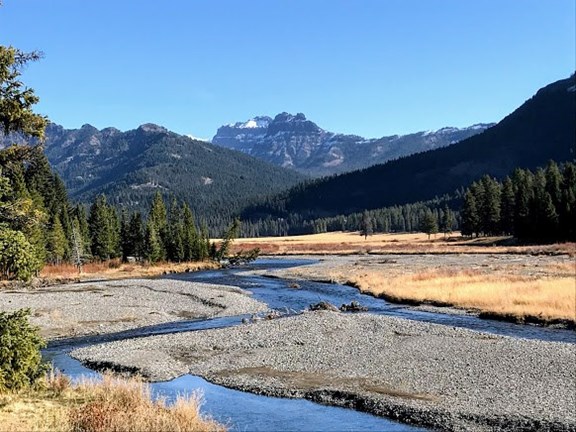
Yellowstone needs no introduction! America's First National Park should be a bucket list item for everyone! Just 2 hours outside the East Entrance to the Park and 3 hours to Cooke City and the NE entrance to the Park, you can easily get to the park from the campground. Many of our guests prefer the quiet of the Big Horn Basin as their base camp, venturing out to the Park on day trips, or stopping here before a scheduled camping trip in the park. Out west, you will see that drives are longer, but that doesn't mean they are without beauty! Your Trip to Yellowstone will take you either through the Shoshone National Forest, over Avalanche Pass and into the park or drive Chief Joseph Highway and enter the park from the NE.
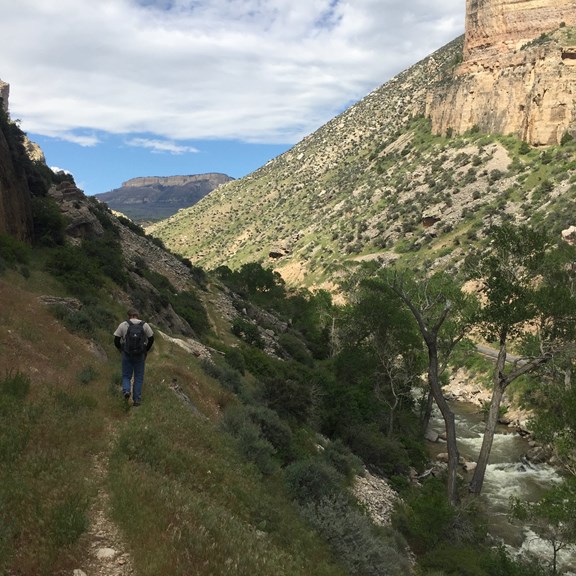
Greybull lies at the base of the Big Horn Mountains in northern WY. The Big Horns quietly surprise; rising abruptly 8,000' up from the Plains, greeting East/West travelers from Yellowstone to Mt. Rushmore like a beautiful wall. Running 200 miles north though the Great Plains, they peak over 13,000', and are home to wildlife like moose, elk, mule deer, black bear, and Big Horn Sheep If Mother Nature is on your list, the Big Horns offer so many choices. Just getting in is memorable. Good roads weave through a crack in the wall, into a canyon, with walls towering hundreds of feet above, until the road takes you so far in, the canyon looks small. Their absolute rugged beauty is both calming and exhilarating. Once in, stop at Shell Falls, hike a trail, visit the Medicine Wheel or find a lake or stream and maybe a fish or two. Go fast or slow - your choice. The Big Horn Mountains offer an uncrowded year-round paradise for visitors and area residents alike. You won't forget them.
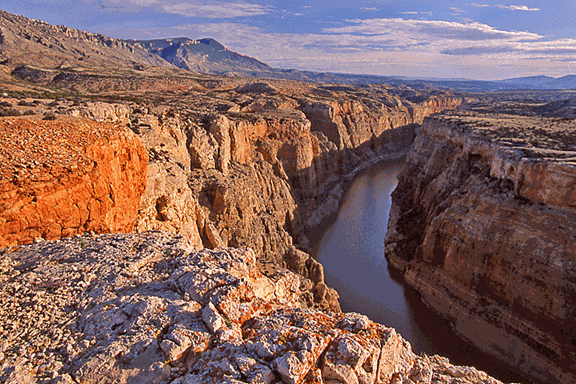
This national park is a little known gem, created after the construction of the Yellowtail Dam in the 1960's. Here you are treated to breathtaking views of the Big Horn Canyon from the Devils Canyon overlook. Boat rentals and boat tours are available to take you into the Canyon during the summer months. Trout fishing at the lake is popular, as are the hiking trails, and overlooks that highlight the unmarred natural beauty of the park. Here you feel the old west. You see the immense obstacles our ancestors faced. Here you are free from the sights and sounds of modern life. The night sky is virtually free of light pollution, opening the Universe up to you. The Canyon is also home to the largest herd of wild horses in the US, who share the area with Big Horn Sheep, deer and soaring birds of prey. This, the third largest canyon in the US, is virtually unknown, but never forgotten. Of Note: The park is located in both WY and MT and they are not directly connected.
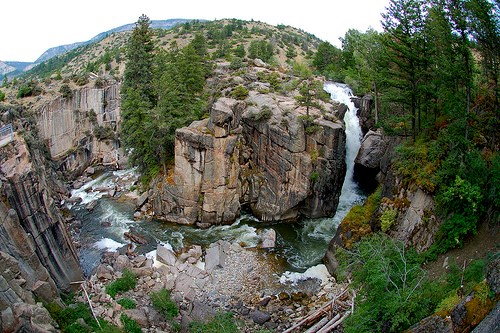
Shell Falls is a spectacular waterfall located in the Big Horn Forest just 30 minutes from the campground! The Falls are easily viewed from the top or you can take the staircase to get closer. The roar of the falls greats you from the parking lot. Water from high in the mountains cascades 120 feet at the rate of some 3,600 gallons per second, following a breathtaking course of fractures in the three-billion-year-old granite. Keep your eyes pealed for the little marmots that call the granite fissures home!
The Shell Falls Interpretive Site is a Ranger staffed visitor center that contains examples of the plants, animals, history and geology of the Big Horn Mountains. As always, we recommend talking with the Rangers as a way of really honing in on what interests you!
Open 7 days a week from Memorial Day through September, 9:30 - 5:00.

The Red Gultch Dinosaur track site lies just 15 miles outside of town and is the largest tracksite in Wyoming. The prints were discovered in 1997. There are hundreds of dinosaur tracks at the site, which are believed to have been laid down at the edge of the sea that covered this area during the Middle Jurassic Period, 160-180 million years ago. Afterwards, consider a stop at the GeoScience Center on Main Street, where you and the kids can learn more about the plants, animals and dinosaur fossils that are abundant here. The GeoScience Center also has many local specimens and knowledgeable staff to answer your questions.
The drive out to the site is also breathtakingly beautiful. Even at the height of our summer season, it is possible to drive to the site and back and never see another person!
Directions: 8 miles East of Greybull off Hwy 14, take the Red Gultch/Alkali National Back country Byway (a pretty good two track dirt road) for about 5 miles. There are restrooms at the site but no other services.
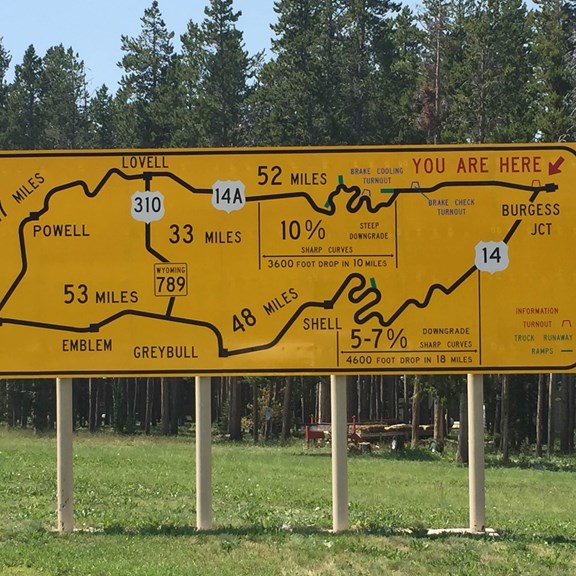
Driving the "Loop" from Greybull into the Bighorn Mountains, through the canyons and deserts that surround us, is an experience you will never forget! Stop as often as you like on this 150 mile day trip that highlights much of what this area has to offer. Pressed for time? Each of these stops is an easy trip from the campground!
Along the Loop, you can explore: (a) the Red Gulch Dinosaur Track Site; (b) Devils Kitchen; (c) Shell Canyon and Shell Falls; (d) Wildlife sightings of moose, elk, deer, antelope and birds; (e) the Medicine Wheel; (f) Porcupine Falls; (g) Big Horn Canyon; and (h) the Pryor Mountain Wild Horse Sanctuary, just to name a few!
After such a beautiful day exploring, come back to the Greybull KOA and relax by the pool and fire. With solid WiFi, you can share all your amazing pictures and adventures with your friends and family (who will surely be jealous!).
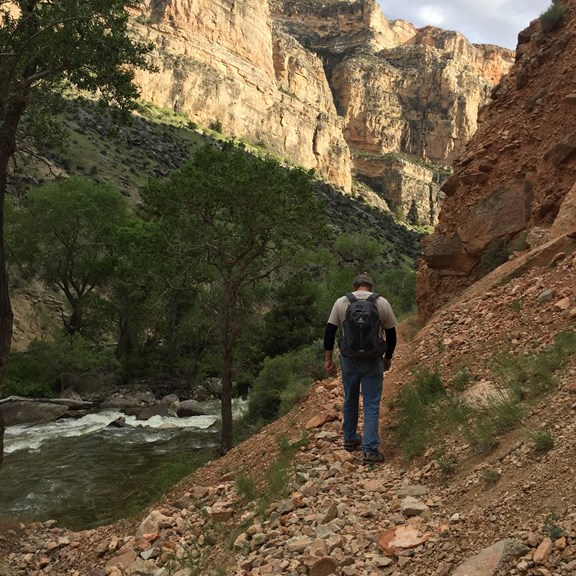
There are hundreds of hiking trails you can day trip from the Campground. The Big Horn Mountains and Bighorn National Forest offer all level of trails, taking you to breathtaking vistas, mountain lakes, waterfalls and the Medicine Wheel. The rich wildlife on the mountain makes for opportunities to enjoy deer, moose, elk, big horn sheep, as well as numerous small species of animals and birds. Remember to keep your distance from all wild animals. There are also over 200 lakes in the Big Horn Mountains, making for some excellent trout fishing. Both resident and non-resident fishing licenses can be obtained from local stores before beginning your hike.
There are miles and miles of two track roads that take you into the desert that surrounds us. There is nothing like spending time in the desert. What looks like vast empty wasteland is surprisingly alive! Ant hills polka dot the landscape (the don't bite if you leave them alone!). Rabbits, antelope, deer, prairie dogs and birds fill the desert landscape. The scorpions and snakes are not so obvious, so always be aware when hiking, whether in the mountains or the desert, that you are responsible for your own safety. There are some basic rules for insuring your safe exploration of the wild. Always be aware of your surroundings, including what kinds of plants and animals you might encounter. Tell people where you're going and when you plan to return, carry plenty of water, a first aide kit and dress appropriately. Basic common sense goes a long way towards keeping you safe!
Most Importantly: Get Out There! Bring a camera! Bring Binoculars! Enjoy!
Additional information on hiking and backpacking in the Bighorn Mountains and Bighorn National Forest can be obtained by contacting the National Forest Offices.
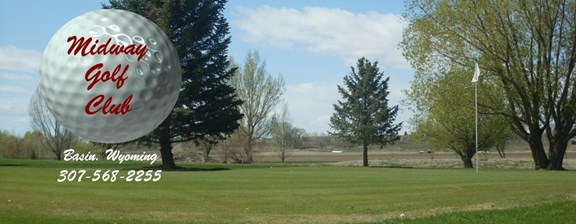
Midway Golf Course in Basin, just 7 miles from Greybull.
Check the website for current rates: http://www.midwaygolfcourse.com
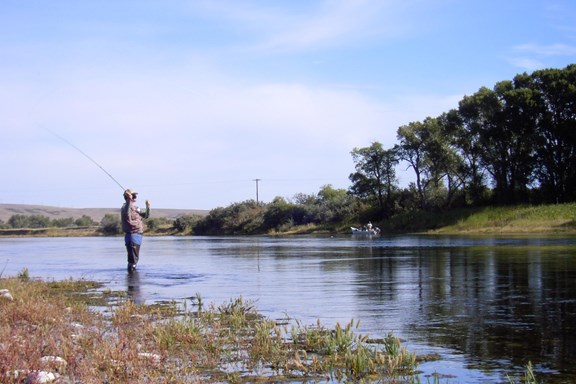
Available fish in the Bighorn Mountains
Brook trout (Saivelinus Fontinalis) This small-headed fish gradually changes color from dark green on top to a white belly. The males have splashes of bright red on their bellies. The light spots on a dark background are joined by some red or pink spots with blue halos on the lower sides. Striking black-and-white borders are found on the lower fins and tail. This fish is mainly seen in waters at or above an elevation of 10,000 feet, though may be found at lower-elevations as well, they are usually the only fish found in the high mountain country. Brook trout are easy to catch. Fish for them with light or ultralight gear. The most frequently used bait is a piece of worm attached to a size 12 to 14 hook. The relative ease of catching, combined with the majestic mountain scenery where they live, makes brook-trout fishing an entertaining activity for families with young anglers. Brook trout spawn in the fall and fishing is good year-round.
Brown trout has olive hues on top, with yellow sides and a belly with black and red or maroon spots. The brown trout has a hard-to-catch reputation which makes the pursuit a challenge. There are many ways to attempt hooking, though if the "big ones" are your choice, the hours of twilight or darkness will offer the best chances. Live nightcrawlers are effective earlier in the season while using grasshoppers as bait in the late fall can provoke strikes that are almost violent. Anglers seeking to increase the challenge of fishing for brown trout prefer artificial flies and spinners. Brown trout prefer spawning in the fast water of streams in fall. This provides for some excellent fishing at a very colorful time of year.
Cutthroat trout is the only trout native to Wyoming. They have a heavier concentration of black spots in the tail area and there is a red or orange slash under the jaw. There are five subspecies of cutthroat trout in Wyoming and many more methods of catching them. Fly fishing seems to be the most popular, though not the only method. All of the subspecies of cutthroat spawn in the early spring. Depending on which of these subspecies is present, spawning may begin as early as March and continue into July.
Rainbow trout is native only to the rivers and lakes of North America, west of the Rocky Mountains and it is well-known as a hard-fighting game fish and tasty meal. Rainbow trout have coloring and patterns that vary widely depending on habitat, age, and spawning condition. They are torpedo-shaped and generally blue-green or yellow-green in color with a pink streak along their sides, white underbelly, and small black spots on their back and fins. They prefer cool, clear rivers, streams, and lakes. Rainbow trout survive on insects, crustaceans, and small fish.
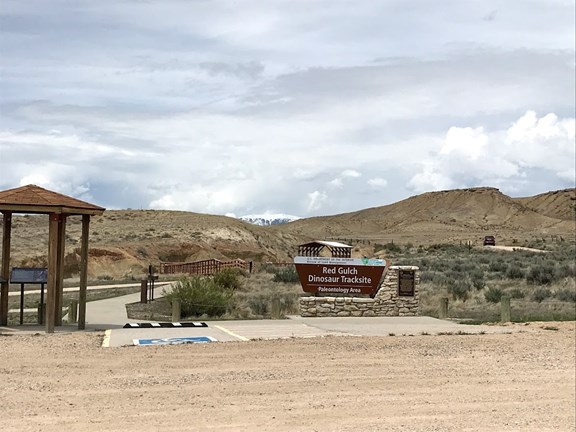
Visit the largest dinosaur track site in Wyoming and walk among dinosaur tracks from the Middle Jurassic Period (160 million to 180 million years ago). These tracks were made just at the shoreline of an ancient sea, in what is now a vast desert surrounded by snowcapped mountains!
That doesn't mean this area has to always be empty. When you start reviewing camping options, your history will display here to help compare sites and find the best stay. You will be able to share your stay information with friends or family and save it for a later time if you have a KOA Account.
Make checkout easy by booking all your reservations at once. Add your sites from different campgrounds into your shopping cart* and then choose checkout.